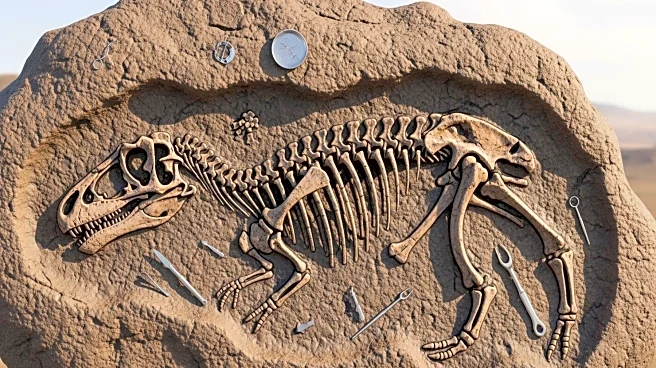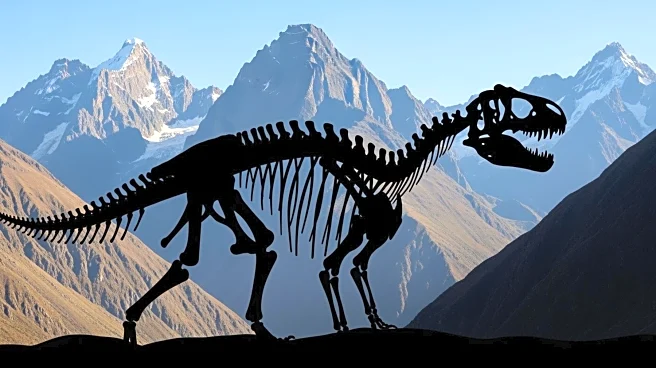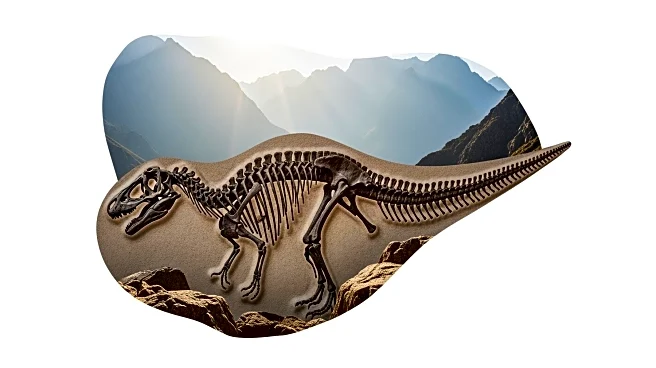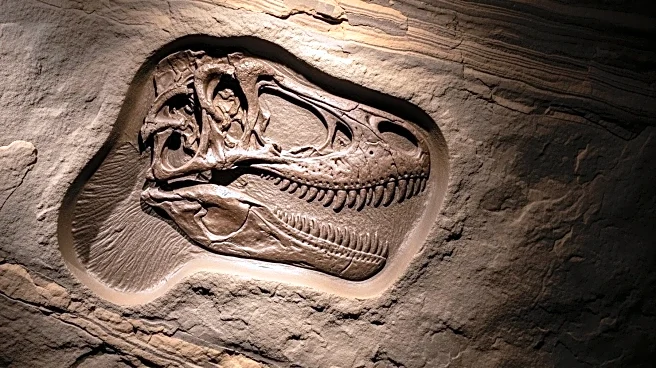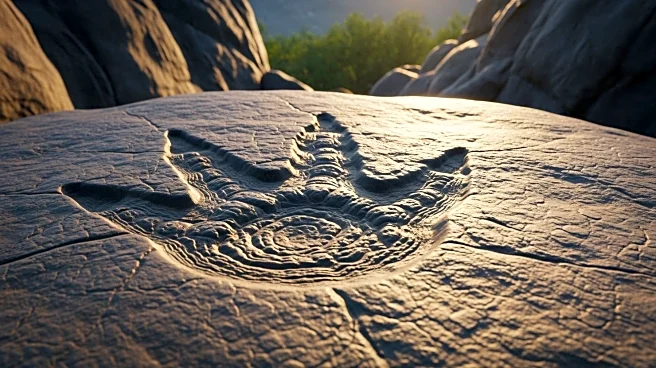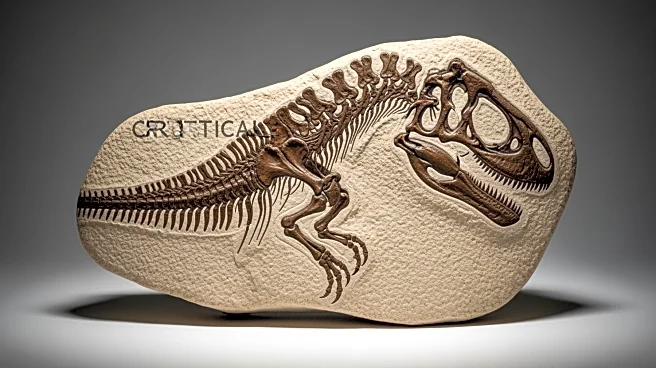What's Happening?
Argentine scientists have discovered a new species of long-necked dinosaur, Huayracursor jaguensis, in the Andes Mountains. The nearly complete skeleton dates back approximately 230 million years, providing
valuable insights into the evolution of sauropodomorphs. The discovery, published in Nature, suggests that the species lived during the Late Triassic period and may have contributed to the development of long-necked dinosaurs. This finding expands the understanding of dinosaur diversity and geographic distribution during early evolutionary stages.
Why It's Important?
The discovery of Huayracursor jaguensis is significant for paleontology, offering new evidence on the evolution of sauropodomorphs, a group known for their large size and long necks. This finding enhances the understanding of dinosaur evolution, particularly in South America, a region rich in early dinosaur fossils. It may lead to further research on the diversification of species during the Late Triassic period, contributing to the broader knowledge of prehistoric ecosystems and evolutionary biology.
